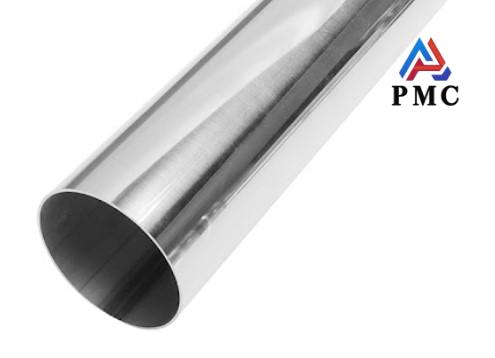
316 Stainless Steel Pipe: Corrosion-resistant Strength
316 stainless steel pipe is a hollow long round steel, belonging to austenitic stainless steel. Its main alloying elements include chromium (Cr), nickel (Ni) and molybdenum (Mo), of which the chromium content is generally 16%-18%, the nickel content is 10%-14%, and the molybdenum content is 2%-3%.
316 Stainless Steel Pipe Corrosion Resistance Principle
The excellent corrosion resistance of 316 stainless steel pipe comes from the exquisite combination of its chemical composition and microstructure. Chromium plays a key role in this. When the chromium content reaches a certain level, an extremely thin but dense chromium oxide protective film will quickly form on the surface of the steel pipe. This protective film is like a solid armor, tightly attached to the surface of the steel pipe, effectively blocking corrosive media such as oxygen and moisture from direct contact with the metal matrix, thereby greatly slowing down the process of oxidation and corrosion.
The addition of molybdenum further enhances the corrosion resistance of the steel pipe, especially its resistance to pitting and crevice corrosion in chloride ion environments. Chloride ions are highly active and can easily destroy the passivation film on the metal surface, while molybdenum can inhibit the corrosion of chloride ions and stabilize the passivation film structure, so that 316 stainless steel pipes can maintain good corrosion resistance in chloride-containing environments such as seawater and certain chemical solutions.
When the passive film is partially damaged by external force or chemical action, the chromium element in the steel pipe will quickly react with the surrounding oxygen to regenerate chromium oxide at the damaged part, allowing the passive film to self-repair and continue to play a protective role. This self-repair mechanism is an important guarantee for 316 stainless steel pipes to maintain their corrosion resistance for a long time, ensuring that they always maintain stable performance in complex and changing use environments.

Comparison of corrosion resistance between 316 stainless steel pipe and other materials
Compared with ordinary carbon steel pipes, 316 stainless steel pipes have obvious advantages. Ordinary carbon steel pipes are mainly composed of iron and carbon, which are easily oxidized with oxygen in humid air to generate rust, which corrodes quickly and has a short service life. However, 316 stainless steel pipes rely on the passivation film formed by alloy elements such as chromium, nickel, and molybdenum to effectively block corrosive media. In the same humid environment, they will hardly rust and their service life will be greatly extended.
Compared with 201 stainless steel pipe, 201 stainless steel pipe has lower chromium and nickel content and limited corrosion resistance. In a chemically corrosive environment, it is prone to rust and corrosion, affecting its performance and life. Due to the effect of molybdenum, 316 stainless steel pipe is far more corrosion-resistant than 201 stainless steel and can work stably in more complex and harsh environments.
Compared with 304 stainless steel pipe, 304 stainless steel pipe does not contain molybdenum and is less resistant to chloride corrosion. In chloride ion environments, such as seawater and swimming pool water, pitting and crevice corrosion are prone to occur. 316 stainless steel pipe adds molybdenum, which greatly enhances the resistance to pitting and crevice corrosion. It can maintain good corrosion resistance in these environments and is more suitable for fields with high requirements for chlorine corrosion resistance, such as marine engineering and coastal buildings.
Corrosion resistance of 316 stainless steel pipe in different environments
1. Atmospheric environment
In urban environments, 316 stainless steel pipes can effectively resist rust and maintain a smooth surface for a long time in the face of pollutants such as automobile exhaust and industrial waste gas due to their dense oxide film.
At the seaside, high concentrations of chloride ions are the enemy of metal corrosion. However, 316 stainless steel pipes can easily resist chloride ion erosion and avoid rust and corrosion by relying on the effect of molybdenum.
In industrial areas, even if there are a lot of corrosive gases and dust, 316 stainless steel pipes can maintain good performance status and ensure the normal operation of equipment and pipelines by virtue of their anti-oxidation and corrosion resistance.
2. Water Environment
In fresh water, 316 stainless steel pipes are highly stable and basically do not corrode. They are widely used in drinking water pipelines, water heater tanks, etc. to ensure people's water safety.
In seawater, the chloride ion content is extremely high. 316 stainless steel pipes can still serve stably due to their excellent resistance to pitting and crevice corrosion. For example, the pipeline systems of seawater desalination equipment and offshore oil drilling platforms mostly use 316 stainless steel pipes to ensure the long-term stable operation of equipment in harsh seawater environments.
When in acidic or alkaline water environments, 316 stainless steel pipes can also effectively resist chemical corrosion and maintain structural integrity due to the synergistic effect of their alloy elements, ensuring normal use under special water conditions.
3. Chemical media environment
In chemical production, we often come into contact with various strong acids and alkalis. 316 stainless steel pipes can withstand the erosion of chemical media such as sulfuric acid, hydrochloric acid, and sodium hydroxide due to their excellent corrosion resistance. They are widely used in reactors, conveying pipelines and other equipment.
In the pharmaceutical industry, 316 stainless steel pipes can not only withstand corrosion from various chemical agents, but also meet the sanitary standards of drug production because of their smooth surface, which makes them less likely to breed bacteria. They are often used in drug storage containers and production pipelines to ensure the quality and safety of drugs.
In the food processing industry, 316 stainless steel pipes also perform well. They can not only resist chemicals such as acids and alkalis in the food processing process, but also ensure that the food is not contaminated by metals, thus ensuring food safety.
Read more: 316L Stainless Steel VS 304 Stainless Steel: in Corrosion Resistance


